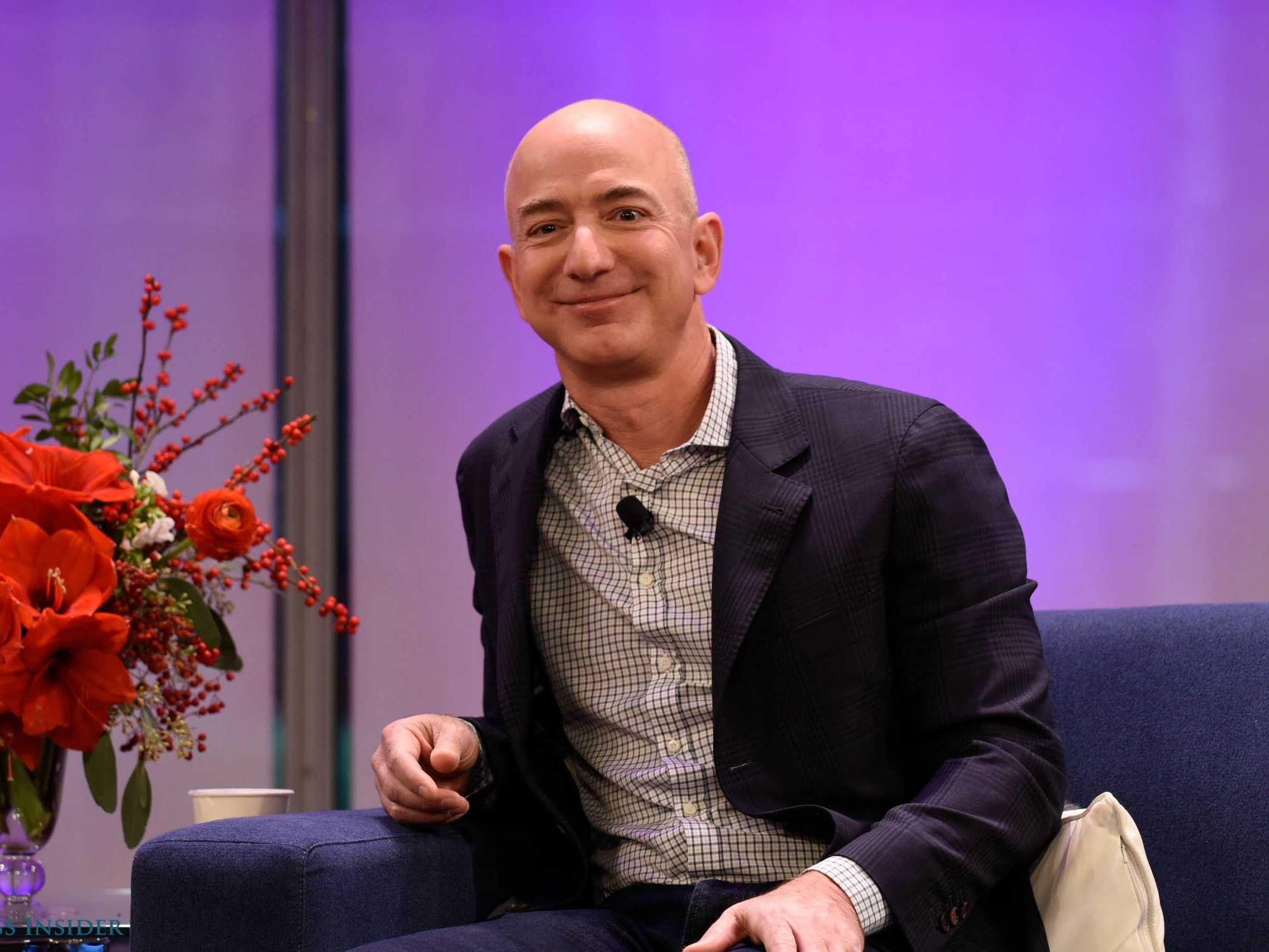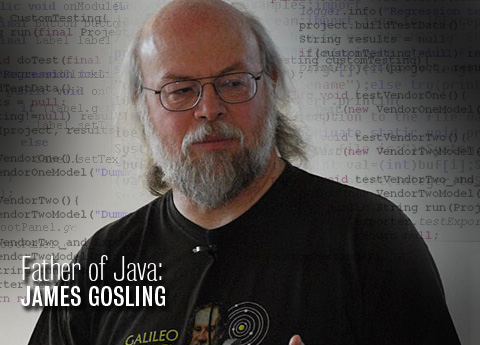Oracle promises new products to help Amazon beat Amazon in the cloud market

Oracle announced the second-generation cloud infrastructure. It is designed for third-party developers who want to use Oracle data centers in their applications. This was told by the company's technical director Larry Ellison at the OpenWorld conference in San Francisco.
The infrastructure parameters are as follows: 28.8 TB, 512 GB and 36 cores on one virtual machine. It all costs $ 5.40 per hour. Oracle representatives claim that these figures are 10 times greater than the power of Amazon Web Services (AWS) - the company's main competitor in this segment.
')
In addition, Oracle launched another new service - Cloud @ Customer. The main idea of the service is that the necessary equipment for cloud computing is installed on the client side to ensure confidentiality and data security. The Cloud @ Customer service, again according to its developers, is a more powerful and cheap tool than competitors' products. And the rest of the service performs the same tasks as the already well-known tool Oracle Cloud.
Larry Ellison, Chairman of the Board of Directors at Oracle, said that customers would not pay for equipment, but could purchase a monthly subscription, reports Bloomberg.
“Amazon's reign came to an end. In the future, he will face serious competition, ”said Allison.
On the timing of the launch of new services in Russia, there is no information.“Our Generation2 IaaS solutions offer 2 times more computing power, 2 times more RAM, 2 times more storage and 10 times more I / O resources, and 20% less than Amazon Web Services, - said Larry Ellison. “IaaS (Infrastructure-As-A-Service) is a great opportunity for Oracle to add cloud infrastructure to our fast-growing SaaS and PaaS businesses.”
In the winter of 2016, Oracle announced the launch of the Oracle PartnerNetwork (OPN) Cloud Program for Partners, which is designed to help them develop their Oracle Cloud business and provide technology support and market development assistance. It also had to spur the development of the corporation's cloud business.

Amazon recently launched Kinesis Analytics (“active analytics”), a new service that allows for analytic processing of streaming data in real time through a SQL mechanism. Amazon Web Services (AWS) already included two services implemented on the Kinesis platform for working with streaming data (Firehose to download such data and Streams to create applications that process such information), but to download this data to customers earlier you had to manage the S3, Redshift, and Elasticsearch services yourself. Now you can use standard SQL tools for this.
New Acquisition
In September 2016, Oracle announced the startup startup Palerra. The transaction is part of a strategy aimed at supplying customers with comprehensive tools for identifying and protecting cloud services. The cost of the purchase has not yet been disclosed.
Palerra is a software developer founded in 2013 that is used for information protection of cloud services. The main product of the company is the Loric platform, which allows customers to automate the process of threat detection, incident response, analytics based on cloud infrastructure.After completion of the transaction, all employees of the startup will go to Oracle. However, they will still remain a single team and will work in a separate unit.
Larry Ellison said that Palerra solutions will be an important addition to the Oracle cloud security product portfolio.
“Security is paramount at Oracle. We will continue to build it, and when we find a supplier capable of doing this job well, we will buy it, ”Allison said.
Oracle intends to integrate its Oracle Identity Cloud Service solution with Loric to “provide comprehensive protection for users, applications, API functions, data and infrastructure to securely deploy clouds with clients,” wrote Peter Barker, senior vice president for information security products at Oracle. addressed to customers and partners.
Oracle also said that the company is reviewing Palerra’s product portfolio and will later provide clients with recommendations on the use of certain solutions. In addition, Oracle promised Palerra users effective integration of the company's products with Oracle software.
In the language of money
Cloud services analysts believe one of the most growing areas in the world in general, and in individual regions in particular. This is confirmed by the large volume of purchases of equipment for the deployment of cloud infrastructure.

Thus, in the first quarter of 2016, according to IDC, sales of servers, storage systems and routers acquired for launching and servicing cloud services in the EMEA region (economic region including Europe, Russia, Middle East and Africa) reached $ 1.3 billion, an increase of 17.6%.
IDC analysts predict that by 2020 the volume of the cloud infrastructure market in EMEA will reach $ 10.7 billion, which will correspond to 46.4% of IT equipment expenses, while the traditional market will at best show zero growth, and the worst is to fall.
Oracle Corporation has calculated that according to the results of the first quarter of the 2017 fiscal year, its revenues from SaaS and PaaS cloud services amounted to $ 798 million, an increase of 77% (by 79% when calculated in constant currency).
Total cloud subscription revenues, including IaaS, reached $ 969 million with a growth of 59% when calculated in US dollars (or 61% when calculated in constant currency).
Total revenues from software sales were $ 6.8 billion. This amount includes revenue from license sales for deployment directly to the enterprise and subscriptions for cloud environments. Growth year to year was equal to 5% when calculated in US dollars and 6% when calculated in constant currency.
Safra Katz, Oracle CEO, connects the growth of two strategic areas, which are cloud business and sales of software for deployment in the enterprise, with an increase in total revenue from SaaS and PaaS by 82% (when calculated in constant currency and without GAAP requirements). This increase was significantly higher than planned.
“As the SaaS and PaaS business continues to grow rapidly, we expect its gross margin to rise from 62% this quarter to our 80% target,” Safra Katz predicts.
Mark Hurd, director general of Oracle, noted that among the corporation's tasks is to receive more than $ 2 billion in recurring annual revenue from SaaS and PaaS.
“We believe that this year will be the second in a row when Oracle sells more SaaS and PaaS solutions than any other cloud provider,” added Mark Hurd. “In the first quarter alone, we had over 750 new SaaS customers, including 344 new SaaS Fusion ERP customers — more ERP customers than Workday has had over the years of this company.”
One "but"
However, Oracle’s larger and more profitable traditional software business is shrinking. In the last quarter, the implementation of new software licenses fell by 11% to $ 1.03 billion. As a result, the company's total revenue grew by only 2% and amounted to $ 8.6 billion dollars, not reaching analysts' forecasts.
In addition, Oracle reported a net profit of $ 1.83 billion, or 43 cents per share, against $ 1.75 billion or 40 cents a year earlier. Adjusted earnings were 55 cents per share, while experts polled by Thomson Reuters expected the result to be 58 cents per share.
The stock market reacted to this by declining Oracle quotes: according to The Financial Times, the company's shares fell by almost 3%. In the current quarter, Oracle predicts adjusted earnings in the range of 58-60 cents per share, while the consensus forecast of Wall Street provides for 65 cents.

Over the past nine quarters, Oracle's adjusted earnings have already been three times worse than analysts' estimates.
However, Safra Katz reported that the rival company NetSuite's takeover process is entering its final stage. A purchase of $ 9.3 billion was announced in July. This is expected to help Oracle attract small corporate customers. Before the company worked mainly with large clients.
According to Safra Katz, the antitrust authorities have already approved the deal, except for US regulators. They will have to announce their decision by the end of September.
Ballast discharge
Oracle distributes its forces and invests only in the most promising areas. This explains the closure of projects inherited from Sun absorbed in 2010.
Now it's NetBeans' turn. Oracle no longer plans to support it.
NetBeans is an open IDE, tool platform and application framework. It is written in the Java language and is intended primarily for creating Java programs. But it also supports other languages: javascript, php and c / c ++.Oracle systematically gets rid of Sun software products. Larry Ellison interrupted the development of OpenSolaris immediately after the takeover.
NetBeans was released in 1995. In 2000, it was bought by Sun. And in 2010, it became the property of Oracle as part of the acquisition of Sun.
In 2013, Oracle completed support for most of the virtualization technologies from Sun.
However, the current situation with NetBeans is most reminiscent of the situation when Sun itself abandoned the OpenOffice project.
It’s good that Oracle didn’t just close the NetBeans project, but offered the Apache Software Foundation to continue developing it. Oracle explained that under NetBeans, 1.5 million developers are still working (according to the company's subjective feelings).
The rights to all NetBeans-related sources, as well as the NetBeans trademark, the netbeans.org domain, and some infrastructure elements will be transferred to Apache. Since NetBeans is distributed in source code under copyleft licenses of GPLv2 and CDDL, then, as in the case of OpenOffice.org, the project is waiting for relicensing and transition to an Apache 2.0 permissive license.
 Zoran Sevarac, a member of the NetBeans Dream Team developer community, endorses the proposed deal: “This is very good, this is a sign that NetBeans has a bright future. The entire NetBeans community takes this step positively. ”
Zoran Sevarac, a member of the NetBeans Dream Team developer community, endorses the proposed deal: “This is very good, this is a sign that NetBeans has a bright future. The entire NetBeans community takes this step positively. ”James Gosling agreed, writing on his Facebook page: “NetBeans is switching to Apache! Oracle decided to open NetBeans even more so that guys like me could easily add the code of our favorite IDE. The best existing IDE will be even better and faster! ”
After making a joint decision on the adoption of the project by the Apache Foundation Management Committee, NetBeans will be placed in the Apache incubator, which will prepare the infrastructure, audit the licensing purity and test the ability of the Apache community to adhere to the development principles.
“Over the years, Eclipse has surpassed NetBeans in popularity. We stopped asking questions about NetBeans a couple of years ago when it became clear that it was no longer interesting to anyone, ”Janel Garvin, CEO of Evans Data, which tracks the languages and tools programmers actually use, told me.
Over the years, NetBeans and Eclipse have been competing for the title of IDE for Java development. Won Eclipse.
Oracle no longer relies on Java. The company has strongly delayed the release of a new corporate version of Java Enterprise Edition (JEE) 8, which should finally be released in 2017.
 “It's not so scary that Oracle is delaying the release of EE, it’s scary that they have withdrawn from working with the community of Java programmers. At first, she transferred Java to proprietary rails, then applied the Roach Motel “trap for cockroaches” model to the language, according to which you can go inside, but you can’t get out, ”noted James Gosling.
“It's not so scary that Oracle is delaying the release of EE, it’s scary that they have withdrawn from working with the community of Java programmers. At first, she transferred Java to proprietary rails, then applied the Roach Motel “trap for cockroaches” model to the language, according to which you can go inside, but you can’t get out, ”noted James Gosling.Source: https://habr.com/ru/post/310512/
All Articles